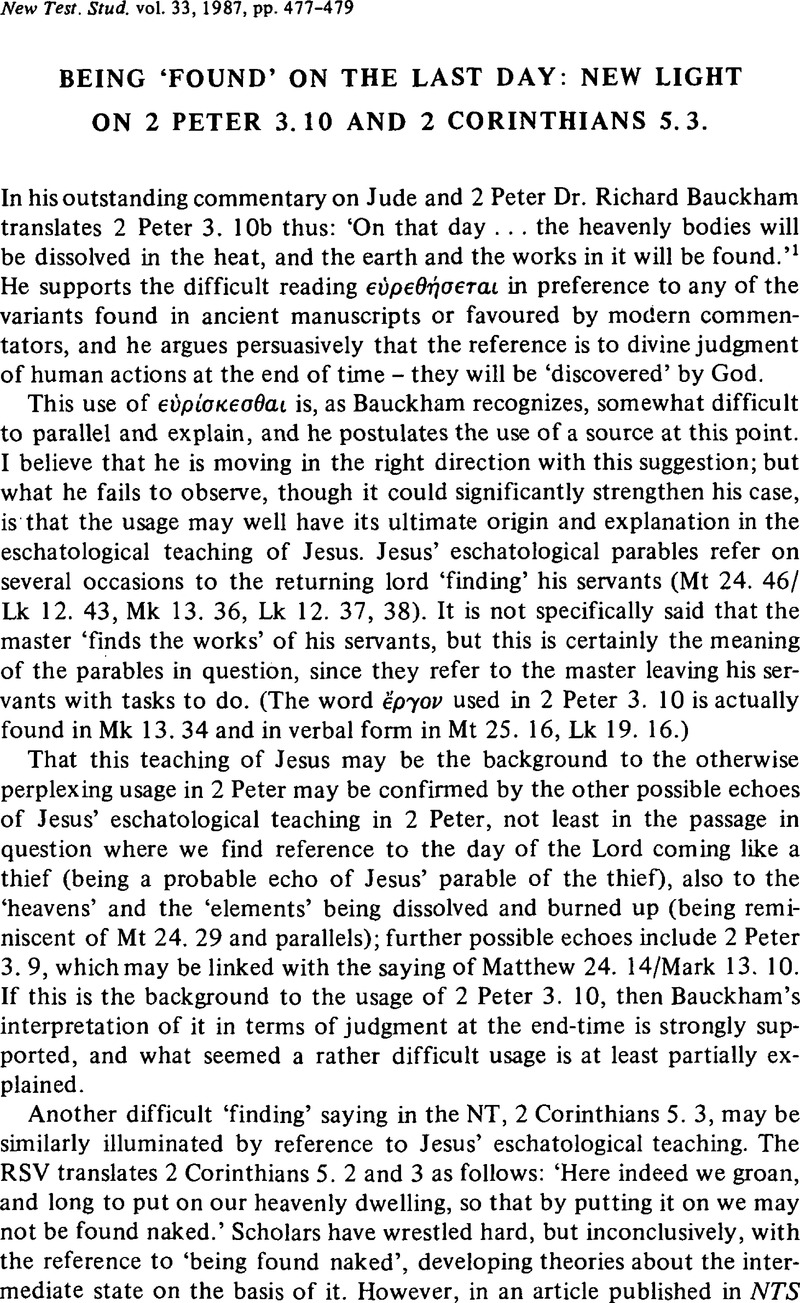Published online by Cambridge University Press: 05 February 2009

[1] Bauckham, R. J., Word Biblical Commentary 50: Jude, 2 Peter (Waco: Word, 1983) 303–22.Google Scholar
[2] ‘II Corinthians V.1–10 in Pauline Eschatology’, NTS 6 (1959–1960) 211–24.Google Scholar
[3] 1 Cor 4. 2 is another quite likely echo of the same parabolic teaching; compare Mt 24. 45, 46/ Lk 12. 42, 43. If it is such, it is notable that the active ‘finding’ by the master in Jesus' parable has become a passive ‘being found’ in 1 Cor 4. 2, as in 2 Cor 5. 3 and 2 Pet 3. 10. Ellis notes that εύρσκεσθαι is almost a technical term for being ‘discovered’ at the parousia, drawing attention to 1 Pet 1. 7, 2 Pet 3. 14 and Phil 3. 9, but not making the link with Jesus' parables. There is, of course, a danger of making too much of supposed verbal links, especially when the word in question is as common as εύρίσκεσθαι but in the cases I have discussed there is a link not only of language but also in the ideas expressed.
[4] Cf. the somewhat similar 1 Cor 9. 27b and Phil 3. 11.
[5] The Greek has an active βλέπωσω here, not a passive.
[6] It also lends support to the thesis, which I have recently proposed, that a pre-synoptic form of Jesus' eschatological discourse was widely known in the early church. See my The Rediscovery of Jesus' Eschatological Discourse (Gospel Perspectives IV, Sheffield: JSOT, 1984), also for further discussion of some of the texts referred to in this note.Google Scholar